FULLERTON, Calif. — On an unremarkable November morning, Jimmie Conner is hunched over his laptop at a dining table in an open-concept kitchen flooded with light. The fourth-year student at California State University, Fullerton, lives in the John Irwin House, a residence for formerly incarcerated students just over four miles from the CSUF campus. The house, in a pleasant Orange County neighborhood with a park, a reservoir, and horse stables, is furnished in a modular style. Two chairs by the fireplace sit ready for one-on-one tutoring, a cluster of ottomans nearby can accommodate a study group, and spaces to hunker down with a book or notes abound: a couch by the front door layered with pillows and blankets, a desk tucked into a corner, a fire table on the patio, and a backyard. Before living here, Conner was at a halfway house, and for the 14 years before that, he was in prison, most recently at the California Men’s Colony.

The walls of the John Irwin House are more window than anything else, like another space at CSUF designed for formerly incarcerated students: the library’s “study and hangout place,” with its sparkling floor-to-ceiling panes, formally known as the Center for Hope and Redemption. Amid all this glass, Conner feels a bit like Cinderella—lucky to be getting an educational experience that’s a perfect fit for him.
Colleges and universities are expecting an influx of students like Conner soon. The vast majority of incarcerated people are currently ineligible to receive Pell Grants, federal financial aid for low-income students. But that decades-long ban will end this summer, thanks to legislation passed in 2020. Nicholas Turner, the president of the Vera Institute of Justice, a nonprofit focused on criminal justice reform, estimates that more than 767,000 people will be able to apply for funds to pursue a credential or a degree through an in-prison education program. At least 95 percent of the people in American prisons are eventually released, with more than 600,000 released each year. These numbers make it clear that the United States will soon have many more people reentering society prepared to attend classes on a college campus.
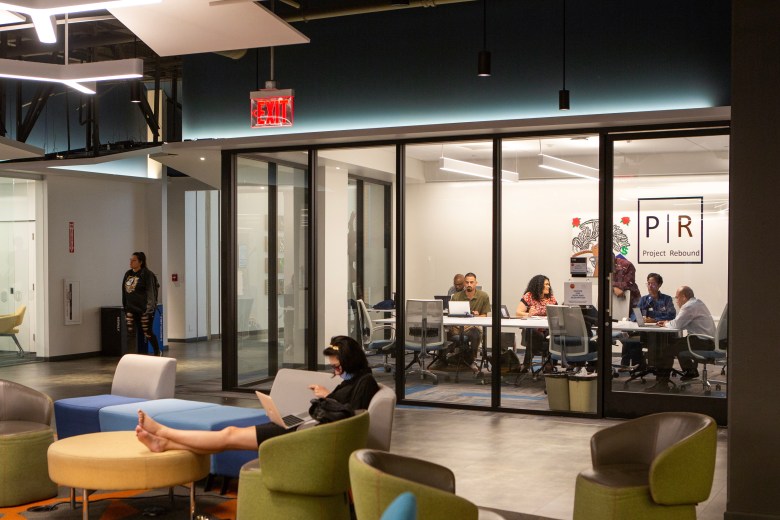
A significant percentage of these new students will face such substantial barriers that they won’t return for a second semester. That’s a loss for society, for formerly incarcerated individuals, and for the college communities to which they would otherwise have made valuable contributions.
It’s a loss that the John Irwin House has a track record of forestalling. Since the residence’s opening in 2018, 21 CSUF students have been given safe, secure housing with wraparound services provided by formerly incarcerated staff members who reinforce a culture of striving and mattering. Twenty of the 21 have either graduated or remain in school, and several are pursuing advanced degrees. The model has been so successful that colleges and universities around the country are exploring plans to reproduce what one staff member calls a “revolutionary” housing solution.
“My parents didn’t gangbang, but my brothers did,” says the 32-year-old Conner, recounting his childhood in Compton, Calif., as he sits at the sleek desk in his pristine bedroom. His brothers encouraged him to focus on school instead, he says, but “you see them with girls and cars and money and think, ‘Hey, this must be the lifestyle.’” He adds, “Differential association—I learned that in one of my criminal theory classes.” He joined their gang when he was 10, already knowing everyone’s name and how to throw up signs.
His first arrest was at age 12. A couple years later, he was present at a shooting. Under the old felony murder rule, which California reformed in 2019, Conner was charged as if he’d pulled the trigger. He didn’t want to take the plea deal, but he couldn’t say “It wasn’t me” without being labeled “a rat or whatever,” he says. Plus, the loved one who fired the shot would have faced life in prison if the case had gone to trial. So Conner took the deal and, at age 14, was sentenced to 17 years behind bars.
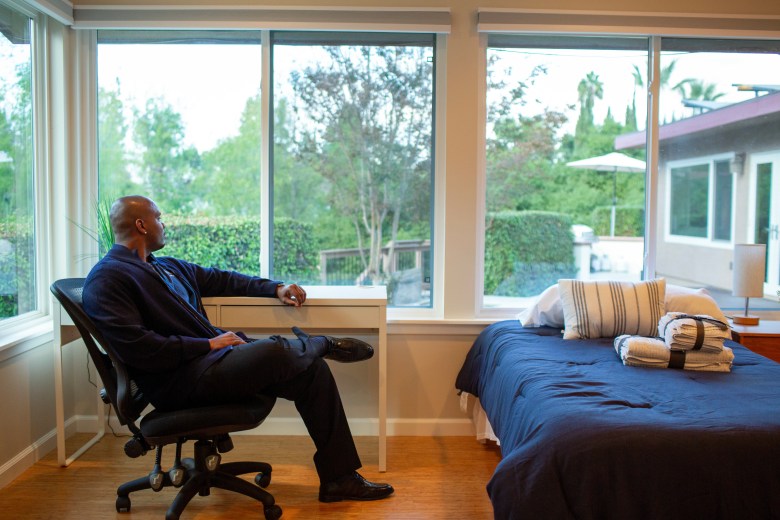
The majority of people sent to prison enter without a high school diploma or a GED certificate, yet almost 70 percent of those who are incarcerated hope to obtain a postsecondary credential. Ultimately, less than 4 percent of them graduate from college, compared with the nation’s overall rate of 29 percent, according to a 2018 report. Meanwhile, roughly two-thirds of well-paying jobs are projected to require a bachelor’s degree or higher by 2031, as the US labor market’s share of unskilled employment continues to decline.
Project Rebound, the California State University program that runs the John Irwin House, was established in 1967 to support formerly incarcerated students at San Francisco State University. It now spans 15 CSU campuses, where it offers academic counseling, opportunities to network, financial advice, tutoring, a community, help in accessing campus resources, financial aid, and more. At CSUF, 106 students participate, bringing the total to more than 300 since 2016. Eight of them live in the John Irwin House, named for Project Rebound’s founder.
The proponents of programs like Project Rebound often cite recidivism numbers to justify their existence, and they’re right: Higher education significantly reduces the likelihood that a person will be sent back to prison. Formerly incarcerated people who participate in postsecondary education programs are 48 percent less likely to be incarcerated again than those who do not—and with each degree they attain, the rate drops. For Project Rebound participants, the recidivism rate is less than 1 percent; for John Irwin House residents, it’s zero.
“I was like, ‘Yeah, I gotta get more of these; I gotta get into college.’ I became a crackhead to education.”
Jimmie Conner, student at California State University, Fullerton, and resident at John Irwin House
But recidivism is just one measure. College degrees are also linked to higher rates of engagement in activities like voting and volunteerism. Those who hold them are less likely to live in poverty, rely on public assistance, or be in poor health, and these effects are passed down through generations. For people who have been incarcerated, college graduation translates to higher wages, more hours worked, and lower unemployment. Though a degree doesn’t erase the stigma of a criminal record, it can shift an employer’s focus from seeing the candidate as a liability to seeing them as someone with potential.
When he was incarcerated, Conner spent a lot of his time reading, but at first he had no intention of enrolling in anything. He was just chasing down a fascination he’d harbored from third grade until he was put in handcuffs in middle school: space. “Anything that involved astronomy, physics, I read it,” he says. A peer in the prison noticed his reading and signed him up for a GED class. Conner was skeptical, but once he had that certificate in hand, “I was like, ‘Yeah, I gotta get more of these. I gotta get into college.’ I became a crackhead to education.”
Related: From prison to dean’s list: How Danielle Metz got an education after incarceration
Conner made a case for transferring to the California Men’s Colony because it offered community college courses. “To us, it was like Harvard,” he says. There, his grades were good enough that he qualified for release one year early. In the months that followed, Conner lived in a halfway house, working a warehouse job and taking classes at Los Angeles Trade-Technical College, with the goal of transferring to CSUF. But when he was accepted, Conner knew it would be too expensive to take an Amtrak train and a bus each day from his parole-approved housing 30 miles away. So he told Project Rebound staff, with whom he’d been in touch since writing them a letter from prison, “I’m gonna get a car. I’ll just sleep in my car.”
Housing challenges like Conner’s are hardly unusual. Study after study lists housing as a primary barrier to educational access for formerly incarcerated students. Formerly incarcerated people are nearly 10 times more likely to be homeless. They are often prohibited from living in public housing or on campus. Landlords tend to deny their applications. Some are forced to crash in costly motels or couch-surf.
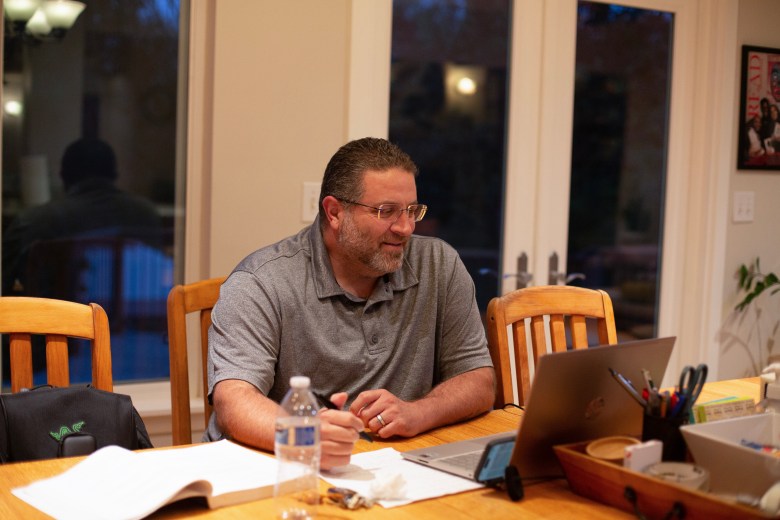
While housing designed for formerly incarcerated people does exist, it often isn’t ideal for students: Transitional housing tends to be located far from campus, often in high-poverty neighborhoods, and comes with requirements that conflict with class times and make it hard to learn (such as blackout periods on electronic devices). And for those who live with family, there can be a host of pressures that make academic success difficult.
Instead of getting a car, Conner accepted an invitation to dinner at the John Irwin House, where, unbeknownst to him, he was vetted to ensure that he’d left “prison politics” behind. As a resident there, Conner would be expected to contribute a third of his take-home pay as rent each month. Two-thirds of that money would go toward the house’s upkeep, and the rest would be put in a savings account, to be returned to him when he moved out.
To help free him from a correctional mindset, Project Rebound wouldn’t test Conner for drugs or tell him when to eat meals or turn off his lights. He would have a curfew, but one that allowed him to attend evening classes and discussion groups (11 PM on weekdays). He knew he’d also have to maintain a GPA of 3.0 or higher, attend workshops, and participate in Project Rebound’s community service programs. What Conner didn’t realize he’d be signing up for was a new extended family.
Romarilyn Ralston is now the executive director of the CSUF branch of Project Rebound. But back in 2016, she was hired in part to answer the mail. Weeks into the job, Ralston announced, “We need a house,” because so many of the applicants’ letters mentioned housing insecurity. She wanted to house “people who are deserving of a quality life,” she says, but “most of all we wanted them to have a community of people who understood how things sometimes can go the wrong way…. There are 48,000 collateral consequences [of incarceration] that exist to trip you up, but all you need is one community to help pick you up.”
In 2017, Ralston had been the one to pick up James “JC” Cavitt, who came running into her office as an undergraduate on the verge of quitting his first job on campus. Cavitt had been assigned to read e-mails, make edits, and forward the revised information, but since he was straight out of prison, he says, “I didn’t know how to operate e-mail. I didn’t know what an attachment was.” Ralston gave him a crash course, and Cavitt—who has since graduated and received a master’s degree—says his life trajectory was forever changed. He now works as the program director for CSUF’s Project Rebound and is pursuing a PhD at a private university nearby.
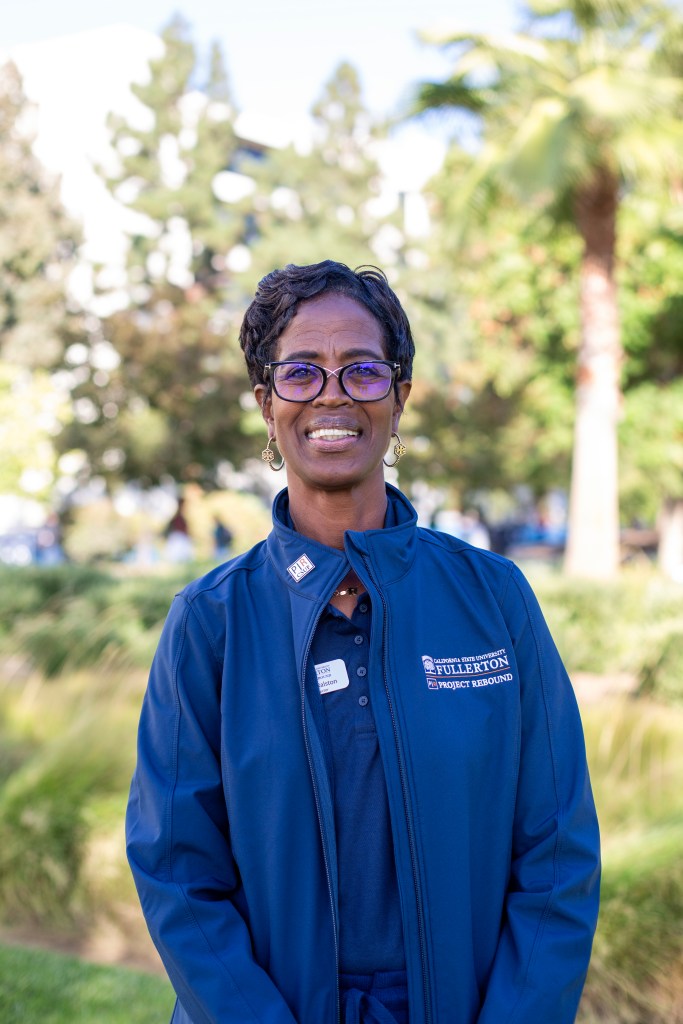
But Cavitt wouldn’t have felt comfortable asking Ralston for help had he not known that she’d spent 23 years in prison herself—one more than he had. He says college administrators and faculty rarely understand the “trauma of incarceration [or] the unique needs of our population.”
One of those needs is a dedicated space to escape the well-documented stigma of incarceration on college campuses. This protective effect is especially important for Black men like Conner and Cavitt. Studies have noted their “double disadvantage,” and Conner has lived it: When he went jogging between classes at CSUF, people would cross the street to avoid him.
Cavitt says that he, too, has gotten looks that communicated: “What are you doing here?” It’s a question that formerly incarcerated students, who are often in the grip of impostor syndrome, tend to ask themselves. But there’s an evidence-backed antidote to that malady: a sense of belonging. Students who feel they belong tend to be more engaged; they enjoy school more, achieve at a higher level, and are less likely to leave without a degree.
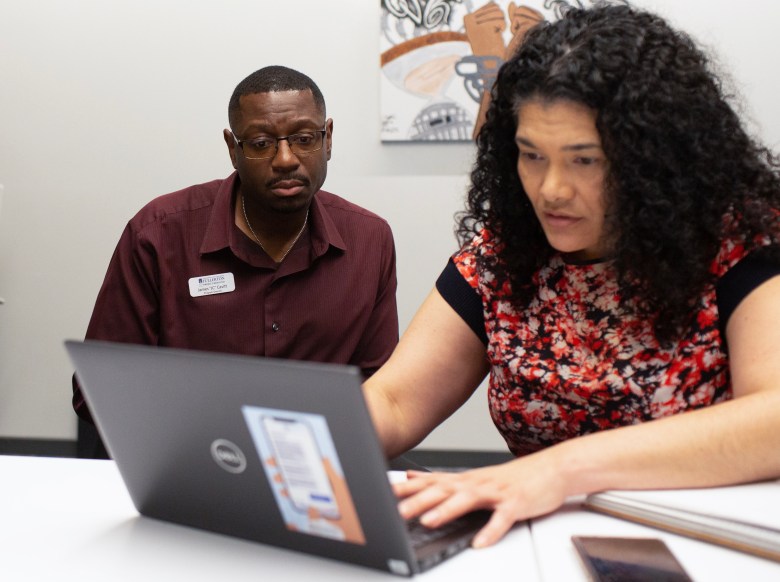
But belonging can be hard. Conner had trouble relating to his peers’ precollegiate experiences. Most are at least 10 years younger, so when they were watching Disney’s latest release or playing soccer at recess, he was in prison learning how to fashion a knife from a CD case. At 18, he witnessed a man being stabbed repeatedly right in front of him with an improvised plastic blade. Why? Because the man smelled like a stick of deodorant he wasn’t supposed to use.
Having lived through countless violent, unpredictable incidents like that, “I didn’t really like talking to people,” Conner says. When he first got to school, he kept to himself. At the house, he’d stay in his room. “You’re stuck in a cage all the time. You come home, and you put yourself in another cage unknowingly.”
Research shows that formerly incarcerated students can have difficulty building social connections and asking for help, because of the way incarceration erodes social trust and contributes to increased rates of PTSD. “People might think that’s a maladaptive response, but inside, that’s a survival mechanism,” says Yehudah Pryce, who lived in the John Irwin House as an undergraduate before completing a master’s degree and a doctorate in social work.
Related: Pipeline to prison: Special education too often leads to jail for thousands of American children
Conner’s housemates understood, and they knew what to do: “They’d tell me, ‘Come out! Say hi to people!’” He did, and he learned that he could breathe around them—“like an exhale,” he says. Conner watched one of his housemates sit and study for hours at a time, “with his headphones on, typing away. That’s who we idolized; that’s who we wanted to be like.” So they mimicked him.
The men would cook for one another and, when work and school schedules allowed, watch TV or play video games. But when Cavitt visited during midterms and finals, “the house would be eerily silent,” he recalls. “They’d be like, ‘Nope, don’t bother me right now, I’m studying.’”
“The house would be eerie silent. They’d be like, ‘Nope, don’t bother me right now, I’m studying.’ ”
James “JC” Cavitt, program director for Project Rebound at California State University, Fullerton
That vibe was “sort of like osmosis” to Charles Jackson, 58. After he moved last fall, Jackson says, “my grades, my studying, everything has gotten better.” This is a common experience. Cavitt says the average GPA of Project Rebound participants is significantly higher than CSUF’s as a whole, and the average GPA of house residents is higher still. Eighty-eight percent of CSUF students who weren’t scheduled to graduate returned to school last fall; 96 percent of John Irwin House residents did. Of the house residents who have graduated, five out of six went on to pursue graduate degrees, and all of them are currently employed.
But wouldn’t living in a dorm also provide this kind of academic osmosis? For many formerly incarcerated students, that isn’t an option, for various reasons. Most dorms are available only nine months a year, and living on campus is prohibitively expensive. Many formerly incarcerated students don’t have family wealth, are required to pay court-imposed restitution, or, because of their age, have less time to pay off student loans. People who look “out of place” are also more likely to have their ID checked or have campus security called on them.
Moreover, dorms aren’t conducive to the requirements of probation and parole. The day after Jackson moved into the house, he says, his parole officer knocked on the door to request a drug test “and said, ‘Here. Here’s a cup.’” If that happened at a dorm and a set of earbuds later went missing, who would people suspect? And other people’s partying poses a risk: A roommate’s pills or a whiff of marijuana in the hall can be cited as a parole violation.
None of these concerns come into play at the John Irwin House. Residents don’t feel the need to look over their shoulders, to watch out for police helicopters or naysayers. Pryce says the ability to let his guard down or to pay just $80 for rent, because that’s a third of what a dishwashing job brings in, “was just such a weight off me…knowing that I didn’t have to come up with some money scheme.” It left more focus for studying, but also, he says, “I think more highly of myself that I’m worthy to be here.” And mentoring and encouragement are available 24/7. For all these reasons, he says, “that housing component—it’s just a total game changer.”
But would it be enough for Conner? He wanted to major in business and move to Silicon Valley after graduation, but in his first semester he failed a required math course. Then he found out his mom was dying. He took the class again and did his best while managing hospice care. He failed again.
“There are 48,000 collateral consequences [of incarceration] that exist to trip you up, but all you need is one community to help pick you up.”
Romarilyn Ralston, executive director of Project Rebound at California State University, Fullerton
Then his mother died, and Conner was devastated. “That was a lot of pressure,” he says. “I got my brother calling me from prison every single day, and I’m the decision-maker. I gotta help pay for the funeral.” It was all too much. Something had to go. So one day in 2020, Conner let Cavitt know that he was done with Project Rebound and would be moving out of the house.
“I saw my little brother just literally crumble,” Cavitt says. They talked about the logistics of living elsewhere, including costs like electricity, water, trash, and Wi-Fi that Conner hadn’t considered “because he’d been incarcerated pretty much all of his life.” Cavitt had lost his own mother the year before, and they talked about grief and how it can exacerbate a person’s tendency to withdraw. Cavitt remembers leveling with him: “I said, ‘Little brother, you’re doing it again…. You are pulling away instead of leaning into the community that is here to help you and support you and wrap their arms around you through this difficult time.’”
Conner was given a bitter pill, Cavitt says, but he swallowed it.
When the expansion of the Pell Grant program goes into effect next school year and more Americans leave prison ready to begin or complete bachelor’s degrees, few campuses will be ready.
The small number of colleges that run education programs in prison tend to cobble together housing for those who enroll in classes on campus after their release, often through referrals or in graduate student housing or “dry” dorms. The Prison Education Project at Washington University in St. Louis puts students in touch with sympathetic landlords who are willing to overlook their lack of a credit history through “an informal, pick-up-the-phone pipeline,” says Kevin Windhauser, the program’s director. A few other universities give them housing subsidies, which is essentially what CSUF does for female Project Rebound participants faced with housing insecurity, since they tend to be custodial parents.
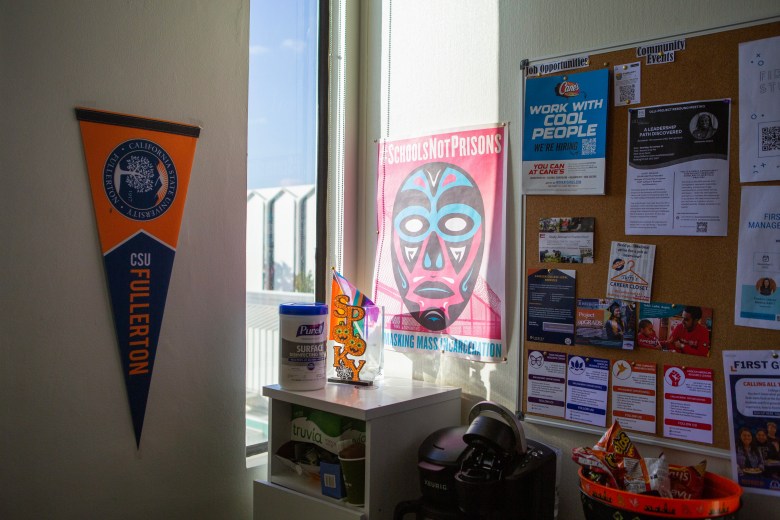
But most colleges provide no housing support designed for these students. Research indicates that only around one-third of California’s colleges offer any services tailored to formerly incarcerated students, let alone housing, and that 72 percent of those are community colleges. Turner, of the Vera Institute, says the national numbers are surely much lower, since “what’s happening in California is the leading edge.”
But more Irwin-style housing is on the way. The nonprofit Thrive for Life has run a house for formerly incarcerated students in New York City since 2019, including some enrolled at New York University and Columbia, and it’s forging partnerships with additional schools, such as Marquette University, which plans to open a house in Milwaukee next fall. Project Rebound is in the process of opening new houses at Sacramento State and Fresno State, and Renford Reese, a professor at Cal Poly Pomona and the founder of the Prison Education Project, has developed plans for lots he owns in Pomona. If he finds an investor, his projects will serve approximately 60 formerly incarcerated students taking classes at Cal Poly Pomona, Pitzer College, and Mt. San Antonio College.
Related: Opinion — Prison learning must be high quality and lead to a degree
Julie O’Heir, the director of the Prison Education Program at Saint Louis University, is attempting to replicate the Project Rebound model there but cites two primary impediments—finances and staffing—that boil down to a budgeting issue. At CSUF, rent from the residents covers a tiny portion of the John Irwin House’s operating expenses. Brady Heiner, an associate professor who founded the Project Rebound program at CSUF and has served as its executive director, says that to establish proof of concept, the house initially relied on philanthropic investments from several foundations.
After four years of running the John Irwin House out of a rental home, Heiner and others brought the program’s success to the attention of state legislators. In 2021, California allocated $5 million to Project Rebound. Part of CSUF’s piece of that pie—supplemented by money from the school’s capital fund, a private donation, and a matching gift—went toward buying its current home.
However, that onetime lump sum “is not enough to sustain us over the long term,” says Heiner, who is now the interim executive director of the overarching CSU Project Rebound Consortium. To keep the John Irwin House open, Project Rebound will have to keep fundraising.
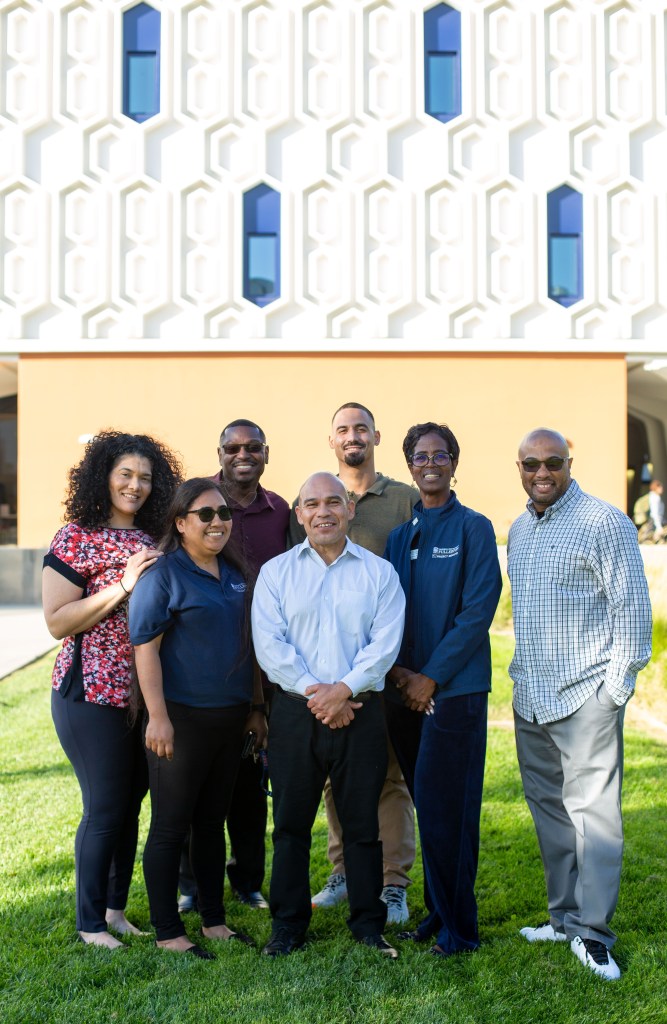
Those who study the issue find this state of affairs frustrating. Melissa Abeyta, an assistant professor at the University of Texas Rio Grande Valley and a cochair of NASPA’s Formerly Incarcerated Students and System Impacted Families Knowledge Community, says: “Across the nation, we have universities with Greek houses. Why would this student population not be deserving of similar residential halls?”
The practice of affinity housing is well established, and many colleges have a program like the First-Generation Living Learning Community at the University of Texas at Austin “for first-generation college students to connect on a deeper level.” Members of sports teams often live together, and the University of California, Berkeley, offers extensive co-op housing with, for example, a building for vegetarians. In other words, colleges and universities know how to do affinity housing.
And “they have the money,” says Stanley Andrisse, an assistant professor at the Howard University College of Medicine who runs the nonprofit Prison to Professionals and its transitional house for formerly incarcerated scholars in Baltimore. “It’s about whether they have the interest or the willingness.”
Abeyta observes that, partly because they don’t understand the benefits, “some college presidents are very uncomfortable with the idea of having formerly incarcerated students on campus.” A 2022 study, citing Abeyta’s work, concluded that formerly incarcerated Latinx students possess a unique mix of knowledge and abilities drawn from their time in prison and on the streets. Abeyta has called these assets “carceral capital.”
Less than 4 percent of people released from prison ever graduate from college, compared with the nation’s overall rate of 29 percent, despite an estimated 70 percent aspiring to obtain a postsecondary credential.
Andrisse has it. Before he became a research scientist, he was sentenced to 10 years in prison on three felony convictions. “I made a good amount of money selling drugs, and those same skills that got me locked up, I’m still using those skills to secure million-dollar grants,” he says. Project Rebound participants say professors rely on them to start classroom discussions and persuade younger students to attend office hours and tutoring. Formerly incarcerated students also serve as role models of what Ralston calls “grit and grind.”
“They are additive to our campus, just like our veterans,” says CSUF’s president, Framroze Virjee. Virjee supported the John Irwin House from the beginning, and the first time he visited it, he cried. “There but for the grace of God goes any one of us,” he says, describing “amazing people who got caught up in things.”
When one house resident was close to dropping out, Virjee scheduled a standing phone call with him every night at 7 o’clock for three months. “Literally one of the best days of my life,” Virjee says, was when “I got to hand him his diploma as he crossed the stage.”
After Conner left for class on that unremarkable November morning, Lance Swann drove over to the John Irwin House to share some good news. The 31-year-old junior, who teaches classes at Ironwood State Prison on the side, had moved out in August. He rented a room in a house for a few months to establish a rental history, and now he’d been offered his own lease in “a pretty nice area of Anaheim.”
Cavitt jumped to his feet, wrapping the younger man in a bear hug. The jubilation lasted for a minute or two, and then Cavitt asked to see the document. “Let’s review it,” he said. “Because landlords can sneak some stuff in there. Same thing when you go in—first thing you do is take pictures.”
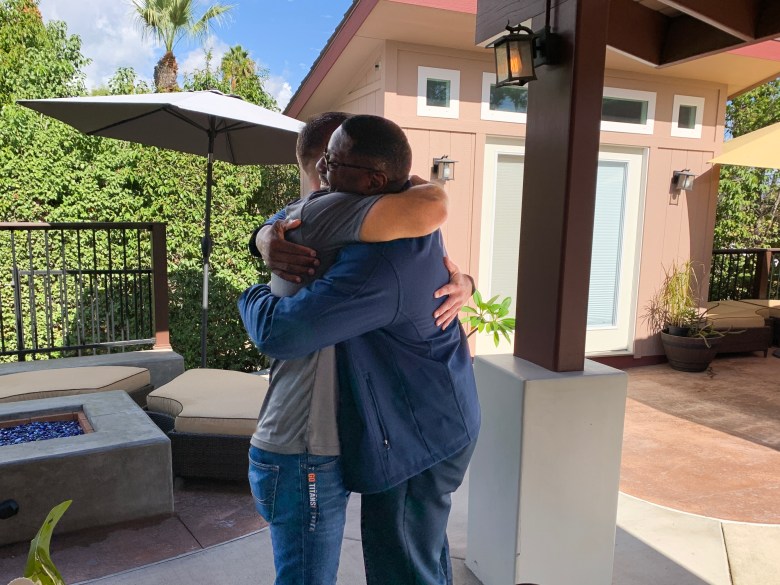
When Cavitt arrived at the house a few hours earlier, Conner had been there studying. “That would have been the worst decision ever, if I’d have left Project Rebound,” Conner told me. “It would be a whole different me. Maybe I would have got in trouble again.”
Instead, Cavitt recalled, Conner “began to thrive”: He opened up and became “more vulnerable about his feelings and emotions, stuff he had repressed for years.” He also started reaching out to professors and going to office hours. “I’m advocating for myself, speaking up,” Conner confirmed.
These days, the two men talk mostly about grad school. Conner has his sights set on at least one more degree.
“I’m watching this man grow into his own, right before my eyes,” Cavitt says.
When they run into each other in early December, Conner is on his way to campus to tutor another student. “From Project Rebound?” Cavitt asks.
“Nah,” Conner responds, just a classmate who needed help.
“Wait a minute, who are you?” Cavitt teases. “When did you start doing this?”
Conner doesn’t know exactly who he’s becoming, but he does know who to thank. Being around people like Cavitt, he says, makes him think, “Damn, I can do this.” The rubber bands on his braces flash CSUF orange as he says, “It’s crazy how good my life went.”
This story about Project Rebound was produced by The Hechinger Report, a nonprofit, independent news organization focused on inequality and innovation in education.



